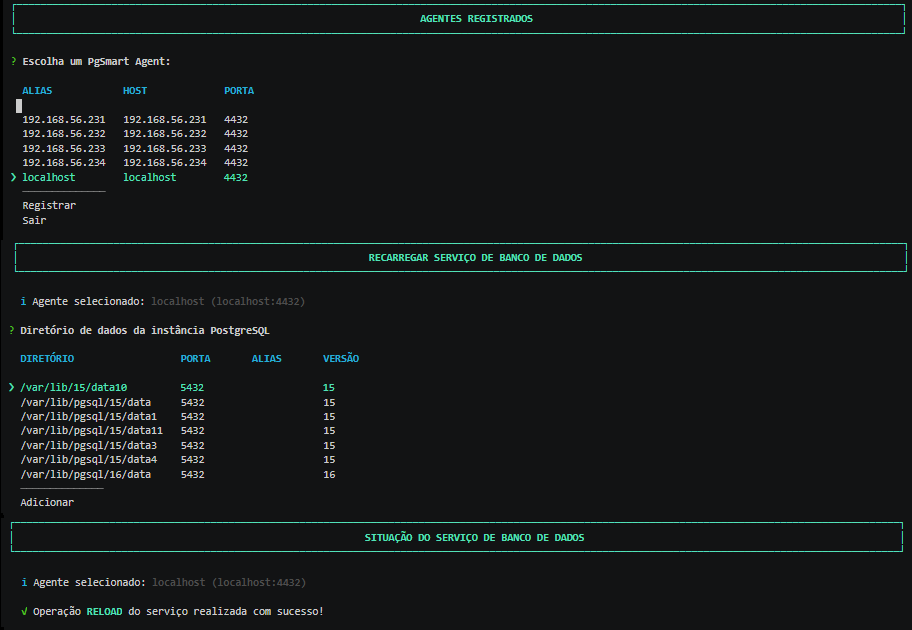Control of the Instance Service
PgSmart allows you to manage your database cluster, enabling you to view the service status, start, stop, restart and reload instance configurations.
pgsmart cluster [OPERATIONS] [Flags]
OPERATIONS :
- Check the cluster status.
- Initialize the service on the cluster.
- Stop the service on the cluster.
- Restart the service on the cluster.
- Reload the configuration parameters of the instance.
Flags:
-D, --pgdata=<path>=> Data directory of the PostgreSQL instance.-M, --pgversion=(11|12|13|14|15)=> Major version of PostgreSQL.-a, --agent=<agent>=> Alias, hostname or IP of the server where a PgAgent is installed.-h, --help=> Help.-q, --quiet=> Non-interactive execution for control of your component (status|start|stop|restart|reload).
-
The binary and data directories are automatically identified by PgSmart, which will present them for selection when there is more than one registered.
-
The
-Dand-Moptions can be used to directly identify the data directory of the instance and the major version of PostgreSQL. -
With this information, it is possible to find the configuration file, extract the port, and find the operating system service that relates to it.
- Instructions
- Video
pgsmart cluster status|start|stop|restart|reload -q -a 192.168.56.232 -D /var/lib/pgsql/15/data
Check the cluster status
pgsmart cluster status
pgsmart cluster status -a <server-id> --pgdata=<PGDATA>
- Instructions
- Video
-
Select the PgSmart agent or Register a new Agent.
-
Select the data directory of the PostgreSQL instance (PGDATA).
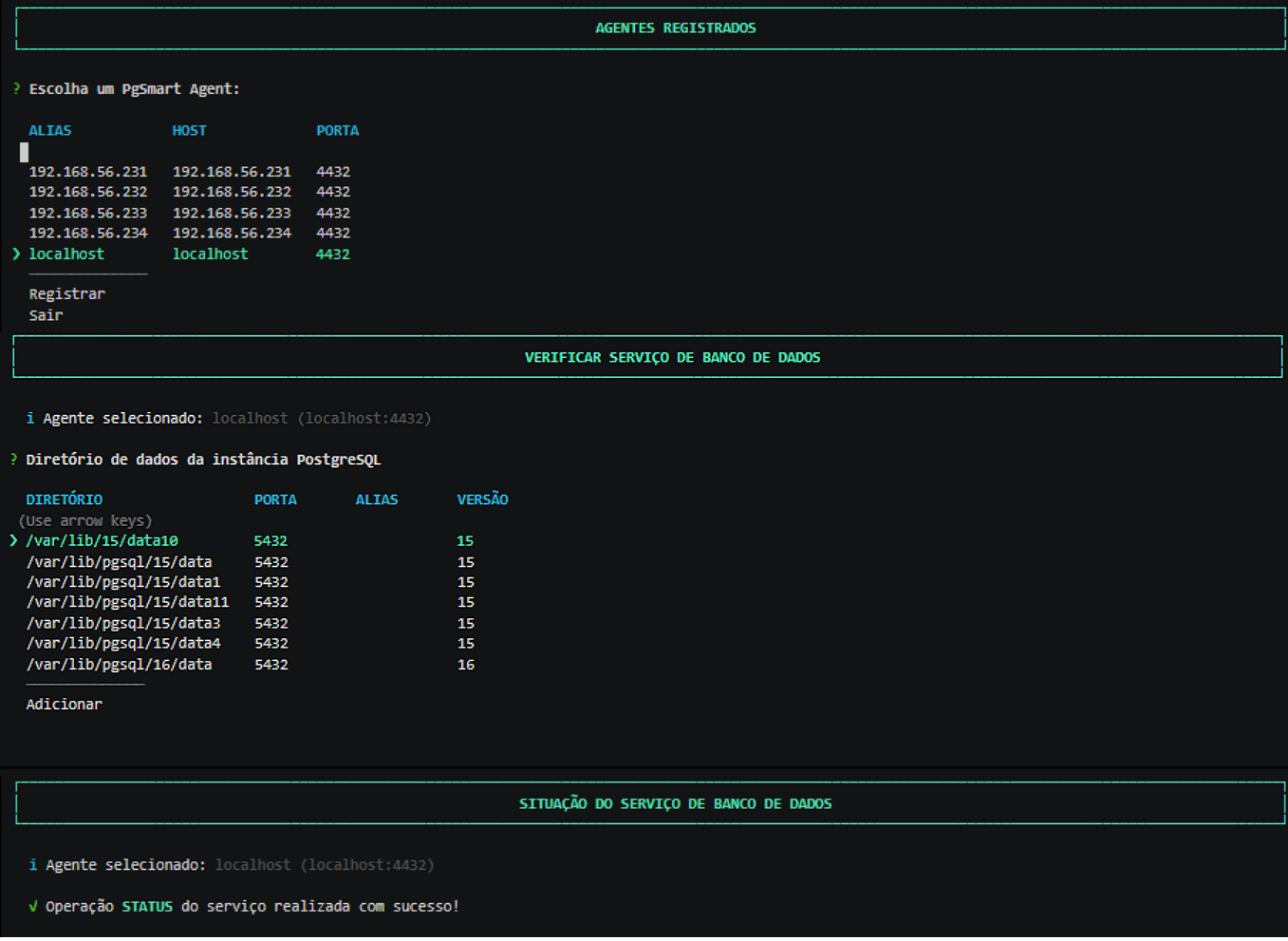 Figure 1 - Cluster Statusnote
Figure 1 - Cluster StatusnoteTo add a data directory not created by PgSmart, select
Add.
Stop the service on the cluster
pgsmart cluster stop
- Instructions
- Video
-
Select the PgSmart agent or Register a new Agent.
-
Select the data directory of the PostgreSQL instance (PGDATA).
:::note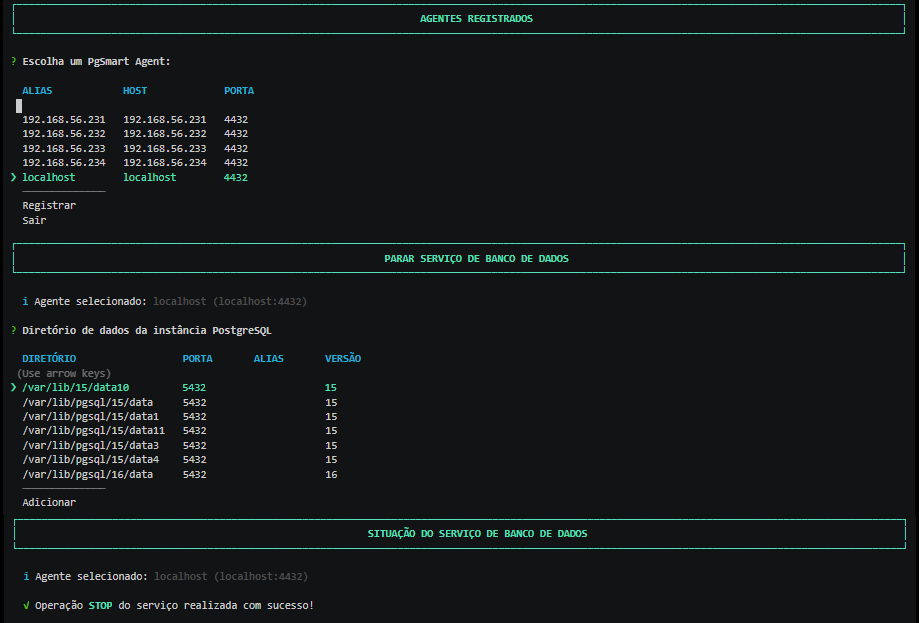 Figure 2 - Cluster Stopnote
Figure 2 - Cluster StopnoteIt is possible to add a data directory not created by PgSmart. For this, select the option "Add".
Initialize the service on the cluster
pgsmart cluster start
- Instructions
- Video
-
Select the PgSmart agent or Register a new Agent.
-
Select the data directory of the PostgreSQL instance (PGDATA).
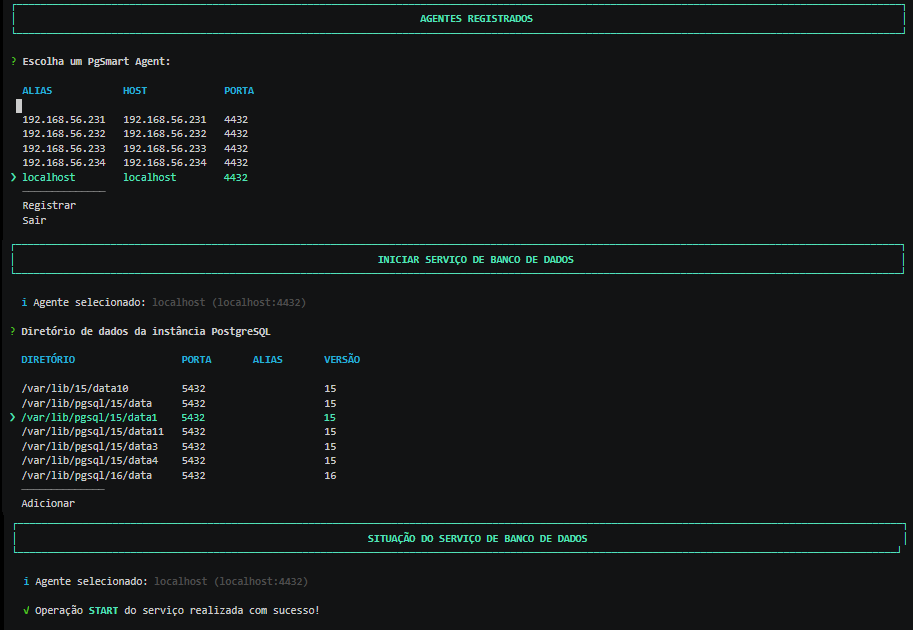 Figure 3 - Cluster Startnote
Figure 3 - Cluster StartnoteIt is possible to add a data directory not created by PgSmart. For this, select the option
Add.
Restart the service on the cluster
pgsmart cluster restart
- Instructions
- Video
-
Select the PgSmart agent or Register a new Agent.
-
Select the data directory of the PostgreSQL instance (PGDATA).
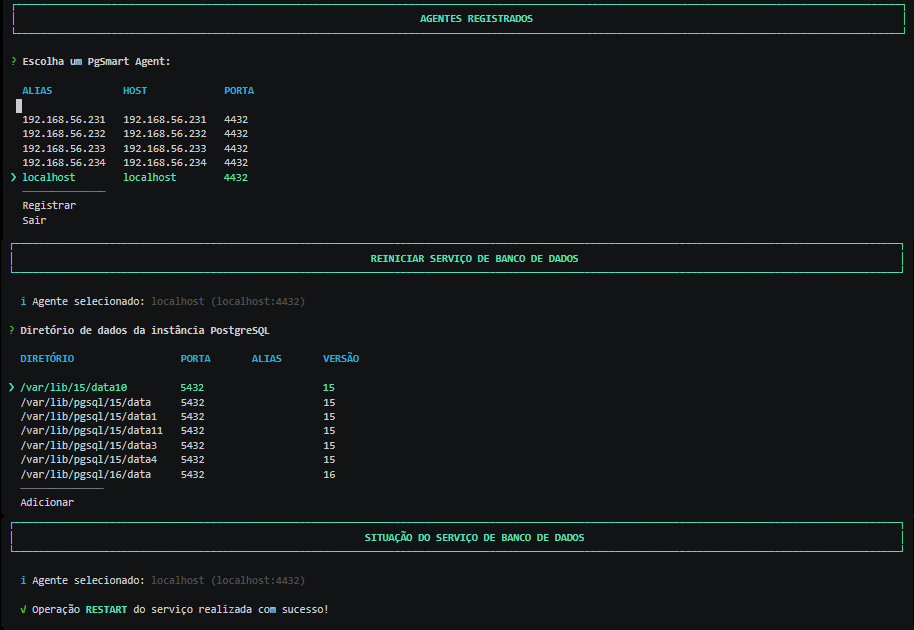
It is possible to add a data directory not created by PgSmart. For this, select the option "Add".
Reload the configuration parameters of the instance
pgsmart cluster reload
- Instructions
- Video
- Select the PgSmart agent or Register a new Agent.
- Select the data directory of the PostgreSQL instance (PGDATA).
